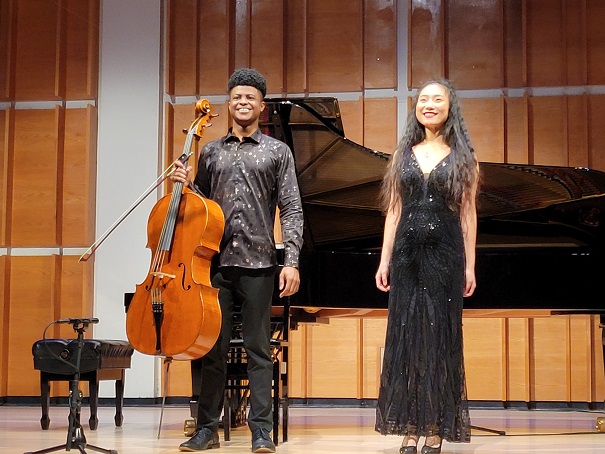Concert Diary: Tuesday Matinees with Cellist Sterling Elliott
November 3, 2021
New York, N.Y.
Few sights make me more optimistic about the future than young talented musicians who have resisted being sucked into the musical hegemony of electric guitars and drumkits that dominates our culture. These are the musical heroes of our age, and one of the best places to see them is the series of Tuesday Matinees at Merkin Hall.
This afternoon was a concert of music for cello and piano with 22-year-old cellist Sterling Elliott and pianist Wynona Yinuo Wang, who combined technical prowess and musical sensitivity with the energy and exuberance characteristic of young musicians.
They began with a three-movement Sonata for Cello and Piano from 2017 by American composer Brian Raphael Nabors (b. 1991), which began by combining jaunty syncopation with an effortless lyricism. The second slow movement (titled “Reflective") featured recurring haunting motifs, while the build in intensity in the last movement burst with magical beauty.
Equally at home for these two musicians was a jump back in time to 1849 for Robert Schumann’s Adagio & Allegro (originally composed for horn and piano) with long melodic lines that required caresses and finesse.
The remaining three works on the program were all composed in the period between 1886 and 1889. The first two were lighter works compared to the Schumann but beautifully played. These were Frederick Delius’s Romance (originally written for violin and piano) and Camille Saint-Saëns’ Havanaise, originally written for violin and orchestra for a Cuban violinist. Havanaise is today quite frequently performed with violin and piano, but rarely with cello and piano, although one of those rare cello performances is by Yo-Yo Ma, which pretty much makes it official. This is a fun piece with a habanera tune, fast intricate passages, and virtuosic glissandi, all ably handled by Sterling Elliott.
Following intermission was the four-movement hyper-romantic Sonata for Cello and Piano by César Franck, another piece originally written for violin and piano. This work is strangely structured: the two outer movements have moderate tempos, while the driving Allegro of the second movement is more traditionally associated with a final movement. The third movement begins with an improvisatory Fantasia but then shifts into a forlorn Lento. What’s nice is that Franck included several solo piano passages during which the cellist sits idle, and Wynona Yinuo Wang had the opportunity to shine.
